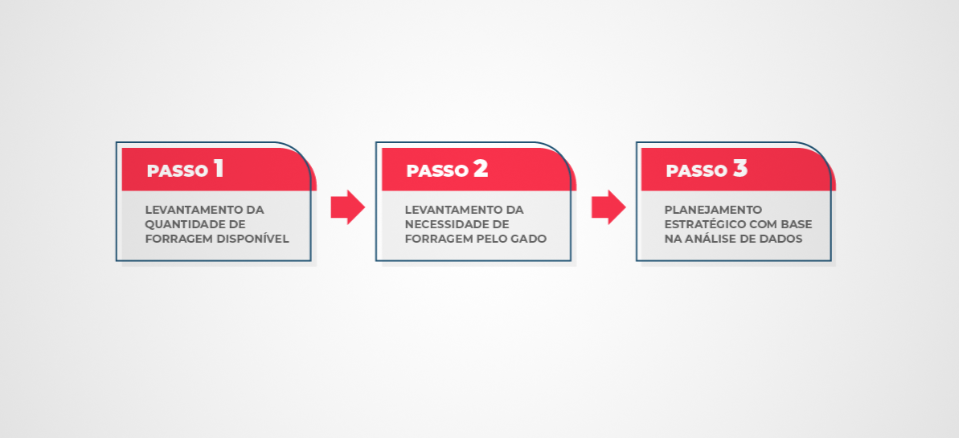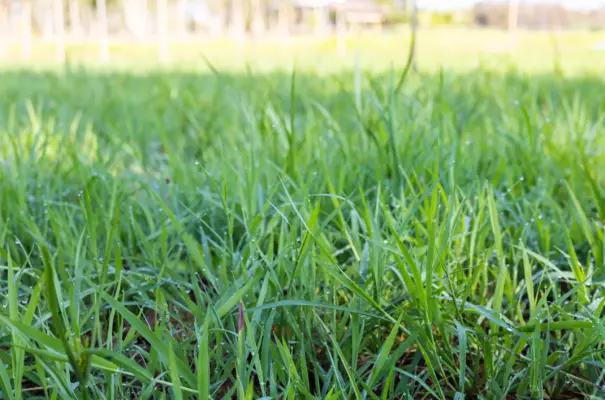In 2023, the area under pasture cultivation in Brazil totals 155.5 million hectares, according to estimates by Scot Consultoria based on data from the Laboratory of Image Processing and Geoprocessing (Lapig). Consequently, Brazilian livestock farming predominantly takes place on pasture.
In other words, pastures are a fundamental factor for feeding herds in the country. However, it is common to encounter situations of either pasture scarcity or excess for the animals.
It is essential for livestock farmers to implement efficient forage budgeting. To do this, it is necessary to calculate the amount of forage required throughout the grazing period, ensuring effective feeding for the herd, which results in weight gain without pasture degradation.
A brief definition
Within pasture-based livestock production systems, forage budgeting is an essential tool for strategic planning. It helps producers manage the forages on their property.
The forage budgeting strategy comprises a set of calculations aimed at estimating the forage mass over a specific period.
These calculations will indicate the amount of forage needed for the entire grazing period so that the herd can have a diet that meets its requirements, gaining weight and not degrading the pasture.
Three steps to implement forage budgeting
To implement forage budgeting, livestock farmers must follow a few steps:
Figure 1. Flowchart for forage budgeting.

Source: Adapted from Cavalcante, 2015.
Step 1: assessing the quantity and available forage stock
Quantifying the forage stock is the starting point for projecting the feed supply on the property. This stock represents the total forage mass in the area. For this assessment, we can adopt either a direct or an indirect method:
The direct method is the most labor-intensive and the most reliable. It consists of cutting forage samples, between 5 and 25 samples per paddock, preferably at ground level, from a known area, usually delimited by a metal or wooden frame of 1 to 2 m².
After cutting all the forage within the delimited area, the collected material must be placed in paper bags and weighed. From this information, the producer can extrapolate the weight to the total area, in hectares, determining the quantity of “kg/ha” of standing forage mass of the pasture. Once this information is determined, the producer can calculate the possible number of grazing cycles, projecting in kilograms per hectare (kg/ha) or tons per hectare (ton/ha) for the entire wet or dry season.
The indirect method, on the other hand, seeks to mitigate the limitations inherent to the direct method in evaluating extensive pasture areas. Although, in general, this method offers lower precision, its advantage lies in operational simplicity. As indirect methods, we can cite the measurement of canopy height, visual estimation, and the use of the rising plate meter:
- Canopy height: the canopy refers to the upper layer of vegetation. In pastures, canopy height can be measured as part of the assessment of biomass and grazing conditions. Measuring canopy height is a widely adopted practice to determine the appropriate time for animals to enter and exit a specific paddock, carried out by consulting a table that indicates the optimal entry and exit heights.
- Visual estimation: it is considered a simple method for estimating the amount of available forage, and even if it seems imprecise, observer training can yield reliable results.
- Rising plate meter: this method is based on the relationship between dry matter production and plant height/density. The equipment consists of a graduated rod connected to a metal disc of known area (which can vary from 0.2 to 1.0 m²). When the disc is pressed onto the vegetation, the rod indicates the average height of the plants. This height is then used to calculate the estimated amount of dry matter per unit area.
After the survey, the calculation should be made using the following formula:
Available Forage = number of hectares x production per month/year
Once the forage stock is determined, the producer moves on to estimating the animals’ forage requirements for a specific period.
Step 2: assessing cattle forage requirements
The need to maintain cattle productive levels, whether for weight gain or milk production, is fundamental for determining feed demand within the production system and for forage budgeting. However, it is important to remember that this variable depends on factors such as animal category, weight, sex, physiological stage, quality of feed provided, among others.
In addition to dry matter intake, it is necessary to consider the forage lost during the grazing process, represented by the difference between the forage produced (accumulated) and the forage actually consumed by the animals.
Kg of forage required per month = number of animals x % live weight¹ x weight² x number of days in the month
¹The percentage of live weight can vary from 0.5% to 3.0% depending on the cattle category.
²Average weight of the herd or the animal category used.
For forage planning purposes, losses of 60% to 70% are suggested — that is, 30% to 40% forage utilization. This way, we can determine the number of animals to be allocated to a given area.
Step 3: bata analysis and strategic planning project
Tabulating and analyzing the information are the final steps in the forage budgeting process. At this stage, it is possible to identify periods of forage scarcity and excess on the property, and this is when decision-making occurs.
Balance = step 1 – step 2
Positive balance: means there is a surplus of forage; Negative balance: means there is a shortage of forage.
During decision-making, several factors should be taken into account, such as:
- Increase or decrease the animal stocking rate on pastures;
- Increase or decrease the grazing area;
- Seek forages better adapted to regional demand;
- Adapt the cattle’s diet to meet all nutritional requirements (add mineral supplementation or concentrated feeds).
The preparation of the forage budget should be initiated at the beginning of each year and adjusted throughout the months, ensuring flexibility and adaptation.
Now that we have discussed forage budgeting, how about continuing to learn about topics that can make a difference for your business?




